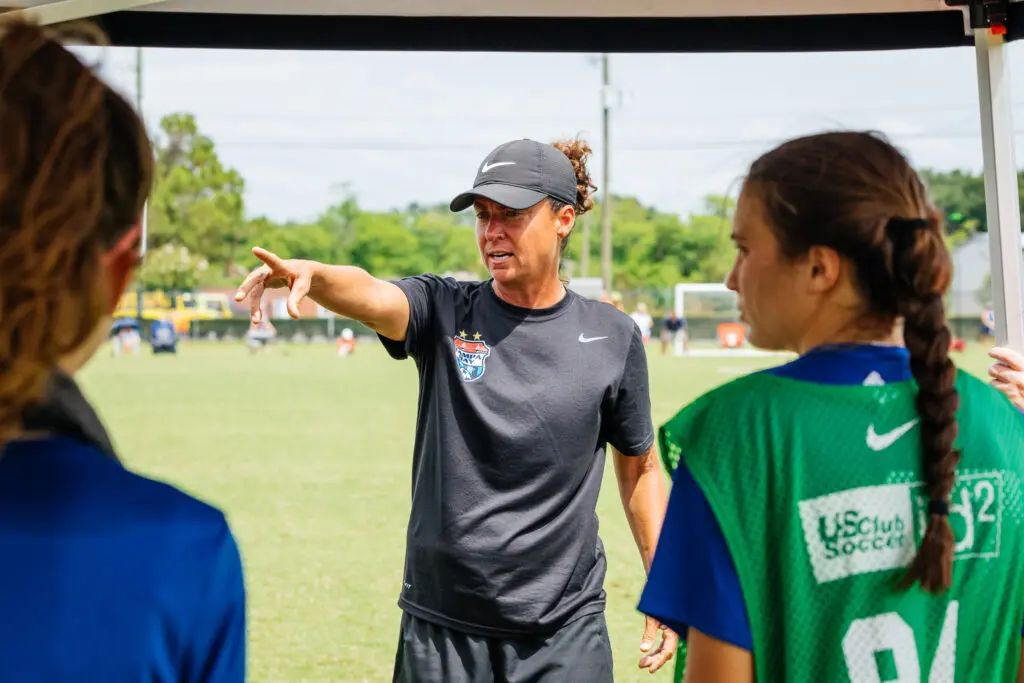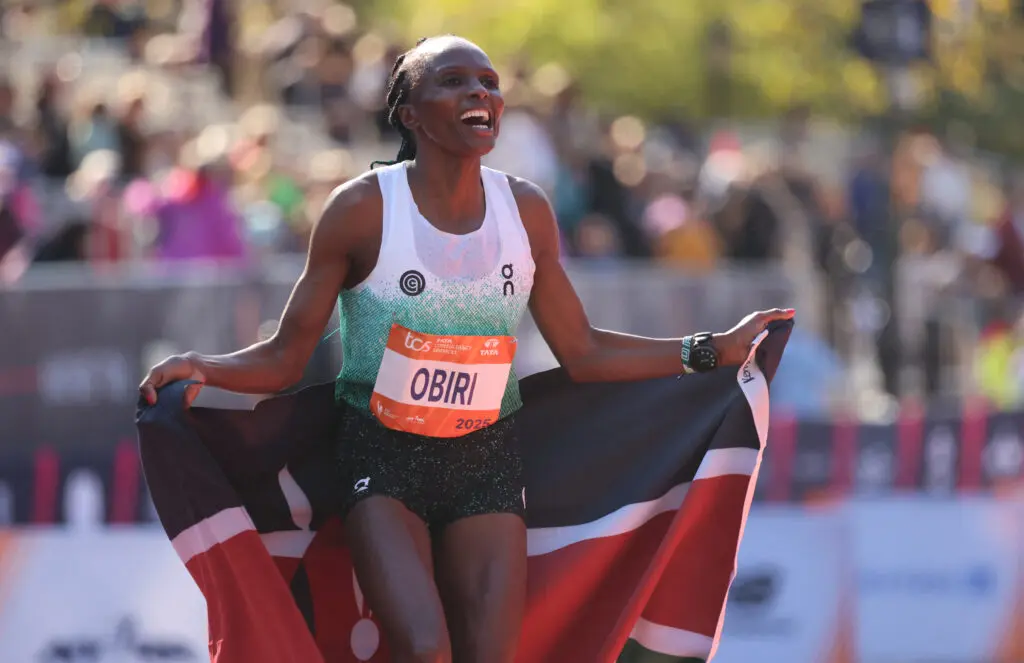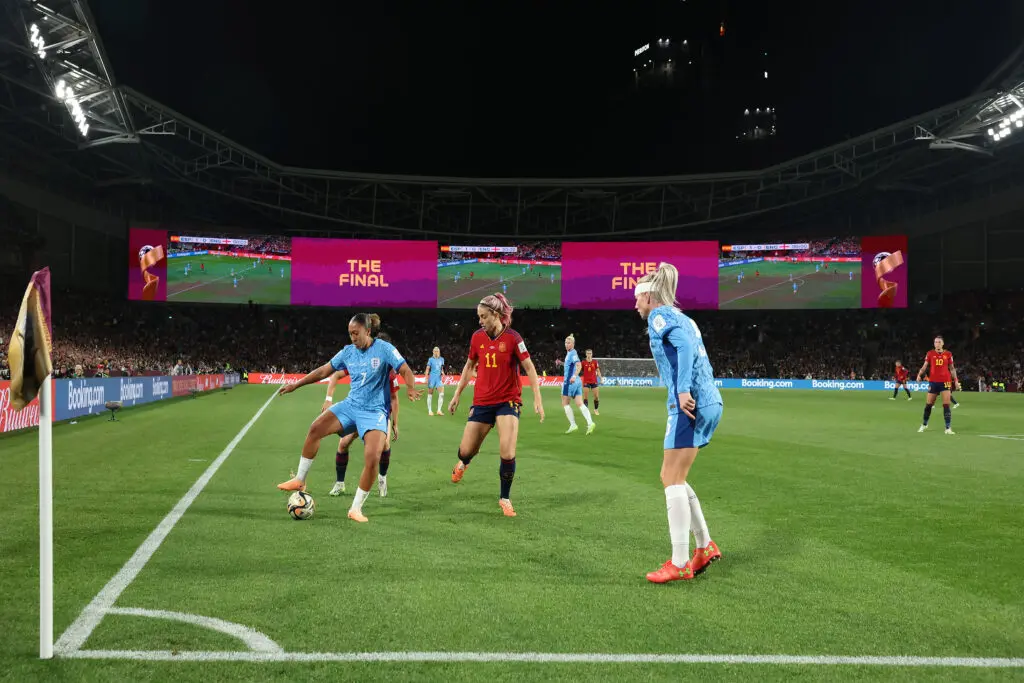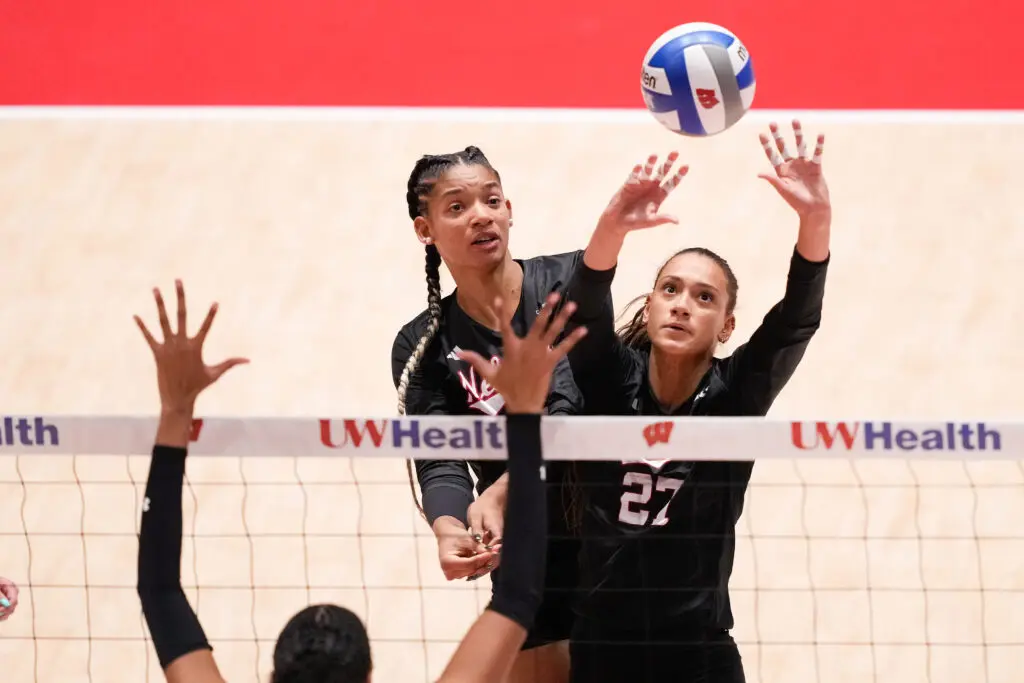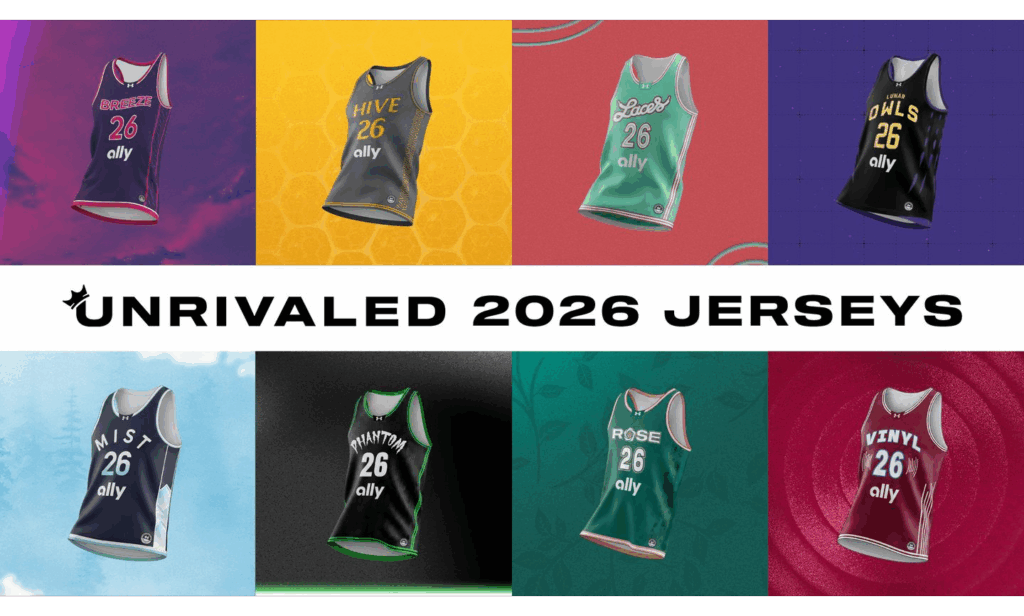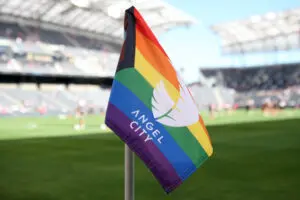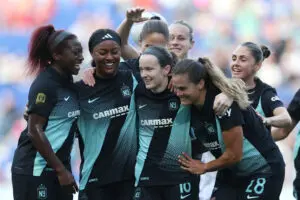A new era of American pre-professional women’s soccer is here, with the USL’s W League kicking off Friday night.
The league’s inaugural season will feature 44 teams across 20 states and a stated mission to build out the women’s soccer pipeline in the United States.
“When you look at the gap of nearly 40,000 women playing soccer in college in America … there is only really limited opportunities for them to play both professionally and amateur soccer across the country, so we are going to help fill that gap and create an opportunity for women to play with the W League,” USL Super League President Amanda Vandervort tells Just Women’s Sports.
“We are bringing elite-level women’s soccer to communities across the country and creating the opportunity to play. There’s plenty of women that want to play soccer, so we are going to do it in a professional way.”
The women’s soccer talent pool, like most sports in the United States, has continued to grow exponentially, with infrastructure scrambling to house and develop the influx of skilled players. The NWSL, the top professional league in the U.S., has expanded into four new markets in the past two seasons as interest from athletes, consumers, brands and prospective owners increases.
This isn’t the first iteration of the pre-professional competition. A similar USL W league existed in the U.S. from 1995 to 2015, folding after 21 seasons due to the Western Conference pulling out of the league.
Now, the W League is looking to create a sustainable women’s soccer network, one that will serve individual players and the sport more broadly.
“Development is part of the story of the W League because we are developing a system as a pathway to the pros,” Vandervort explains. “So, you come to the W League — it complements your college season but doesn’t affect your eligibility, and then it provides you an opportunity for coaches to scout you, for you to play more year-round soccer as a collegiate player and then go on to the pros.”
The gap from college to professional competition has not consistently been bridged in women’s soccer, or in women’s sports generally for that matter.
WNBA players have been vocal this preseason about the salary cap requiring teams to cut top college draft picks from their final rosters, leaving them without a team or a place to play in the United States. Chiney Ogumike of the Los Angeles Sparks told reporters this week that the WNBA could use a G league or developmental league to capture the overflow of talent.
The W League hopes to fill the collegiate-pro chasm in soccer and keep promising American talent stateside. Not all athletes who enter the W League, however, will go pro. The league, Vandervort says, is just as invested in nurturing players eager to learn more about sports management, coaching or communication, paving the way for more women and former players to fill administrative positions.
“When we talk about development, there is different pathways for players, and if you zoom out and you look broadly at what does development mean for sport in this country and soccer in this country, it means creating more opportunities and creating an elite-level league that we can learn from, grow from,” Vandervort said.
Tricia Taliaferro, Coach of the W League’s Tampa Bay United Soccer Club, says she welcomes the challenge of coaching amateur players. As a longtime U.S. youth national team coach, Taliaferro knows the importance of building out the soccer ecosystem in America.
“Including the women in this platform is the next phase as far as development across the world and in the States,” she says. “It’s the biggest thing that we need because other countries are starting to catch up or surpass.”
The USL aims to serve as trusted support for the women’s developmental pipeline, just as the organization has functioned on the men’s side, sustaining leagues across the professional ladder.
“We are in a position of privilege here in that we are building something from scratch, and we have infrastructure in the leadership that really believes in the women’s game, in women’s soccer, in the development and the future of women’s soccer,” says Missy Price, the USL’s Vice President of Women’s Soccer. “We think a lot about the long-term sustainability of this league and making sure that the development and the systems and structures around it, making sure that they’re foundational elements to being able to deliver on that vision.”
“As we re-introduce women’s soccer, the pathway here at the USL, we have the opportunity to learn from the men’s vertical, but then also do things in the way that is best for the women and the women’s game,” adds Vandervort.
The foray back into women’s pre-professional soccer also provides a unique opportunity for coaches looking to enter the women’s game.
“Providing opportunities for women, I think a lot of people have always talked about it, but never really given it a platform,” Taliaferro says. “Or the women who, like myself, have aspirations to coach pro, and then you get pro opportunities or interviews and then it’s like, ‘Well, you don’t have experience.’ OK, well, how am I supposed to get experience?” Taliaferro says.
“If you peel back the layers, I think that’s what the USL is providing … you’re elevating the female coaches that have the interest to do it, providing more opportunities on a level stage, and now we are competing for jobs off of merit and our background and our experience and our resume.”
The USL, Taliaferro says, allows coaches to build their programs from the ground up, giving them a chance to advance their professional careers.
The reach of the pre-professional league is broad, with the potential to reverberate across the sport. The mission, however, is simple: to be the most trusted pre-professional women’s league for players, coaches, partners and fans.
The success of the inaugural W League season, according to Price, all boils down to player experience.
“If someone played in the W League and enjoyed their experience and felt like it was valuable to them, they grew as a player, they saw it as an integral piece of their development or career goals or made them better for whatever is next,” she says.
The W League’s season kicks off Friday, with the Indy Eleven hosting Kings Hammer FC at Grand Park at 7 p.m. ET.
Clare Brennan is an Associate Editor at Just Women’s Sports.
